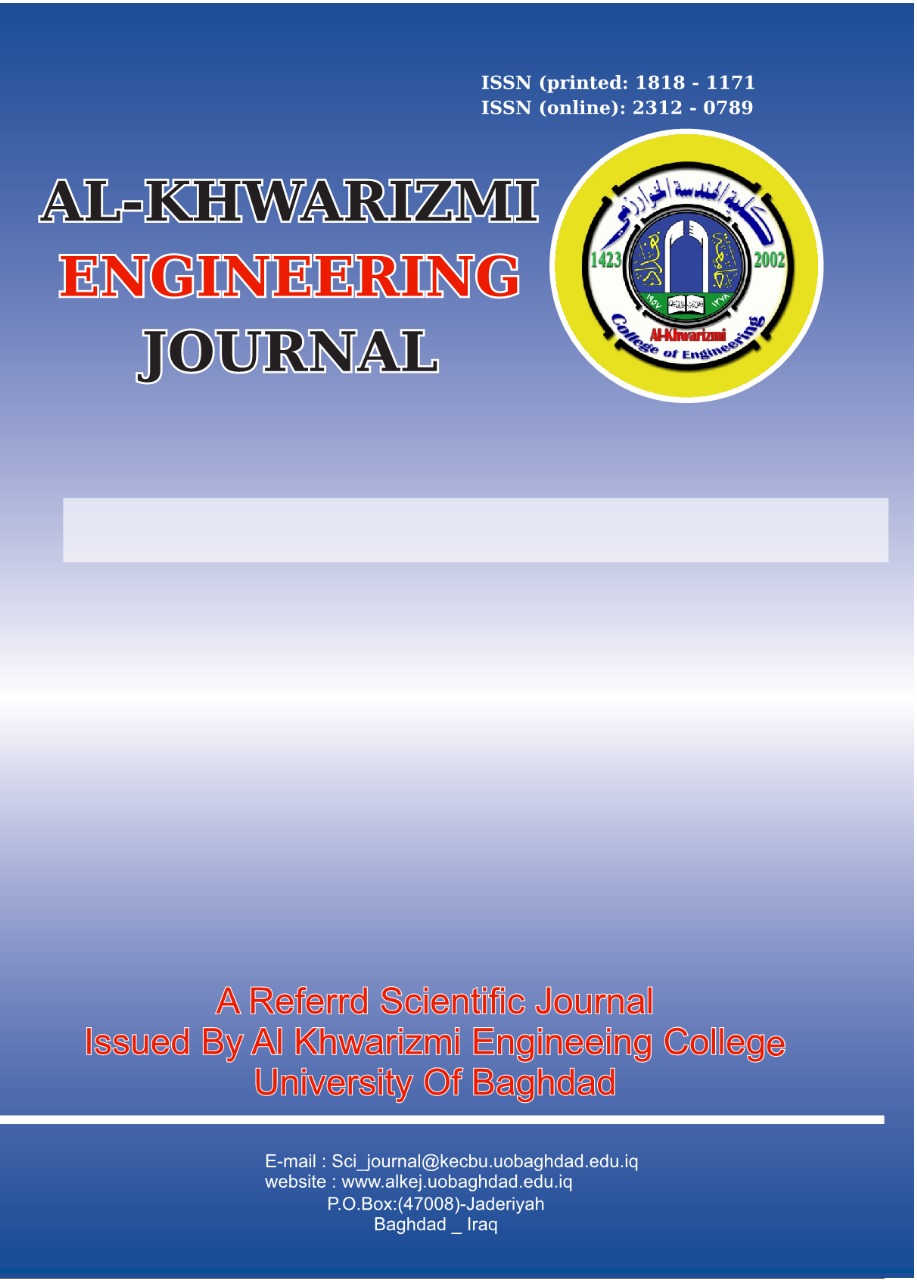Abstract
Metal cutting processes still represent the largest class of manufacturing operations. Turning is the most commonly employed material removal process. This research focuses on analysis of the thermal field of the oblique machining process. Finite element method (FEM) software DEFORM 3D V10.2 was used together with experimental work carried out using infrared image equipment, which include both hardware and software simulations. The thermal experiments are conducted with AA6063-T6, using different tool obliquity, cutting speeds and feed rates. The results show that the temperature relatively decreased when tool obliquity increases at different cutting speeds and feed rates, also it is found that the mean tool rake face temperature distribution decreases with increase of tool obliquity. The result also show that the maximum error between the predicted and measured temperatures by IR camera was between 6-27 °C.
Keywords
Deform-3D
Infrared
tool obliquity
turning.
Abstract
أﻥ ﺍﻏﻠﺏ ﺍﻟﻌﻤﻠﻴﺎﺕ ﺍﻟﺘﺼﻨﻴﻌﻴﺔ ﻭﺍﻟﺘﺸﻐﻴﻠﻴﺔ ﺘﻨﺠﺯ ﺒﺎﺴﺘﺨﺩﺍﻡ ﻤﻜﺎﺌﻥ ﺍﻟﺘﺸﻐﻴل ﺍﻟﻤﺨﺘﻠﻔﺔ,ﺤﻴﺙ ﺘﻤﺭﺍﻟﻤﺸﻐﻭﻻﺕ ﺒﺴﻠﺴﻠﺔ ﻤﻥ ﺍﻟﻌﻤﻠﻴﺎﺕ ﺍﻟﺘﺸﻐﻴﻠﻴﻪ ﺍﻟﻤﺨﺘﻠﻔﺔ ﺍﺒﺘﺩﺃ ﻤﻥ ﺍﻟﻤﺎﺩﺓ ﺍﻻﻭﻟﻴﻪ ﻭﺼﻭﻻ ﺍﻟﻰ ﺍﻟﻤﻨﺘﺞ ﺍﻟﻨﻬﺎﺌﻲ، ﻭﺘﻌﺘﺒﺭ الخراطه الاكثر استخداما في عمليات قطع المعادن, هذا البحث يركز على تحليل التوزيع الحراري خلال عمليات القطع المائل بأستخدام طريقه العناصر المحدده (FEM) وتطبيقها في برنامج DEFORM 3D V10.2 . تم استخدام ماده الالمنيوم AA6063-T6 بظروف تشغيل متعدده (سرع قطع, تغذيه, ميلان الاداه) .اظهرت نتائج القياسات الحراريه بالاشعه تحت الحمراء ذات الدقه العاليه بعد مقارنتها مع نتائج طريقه العناصر المحدده(FEM) انخفاض متوسط درجات الحراره عند وجه جرف الاداه عند زياده ميل الاداه عند سرعه قطع وتغذيه مختلفه,وكذلك اظهرت النتائج اعلى نسبه خطاء بين درجه الحراره المتوقعه والمقاسه بالكاميرا الحراريه يتراوح بين6-27 °C .
